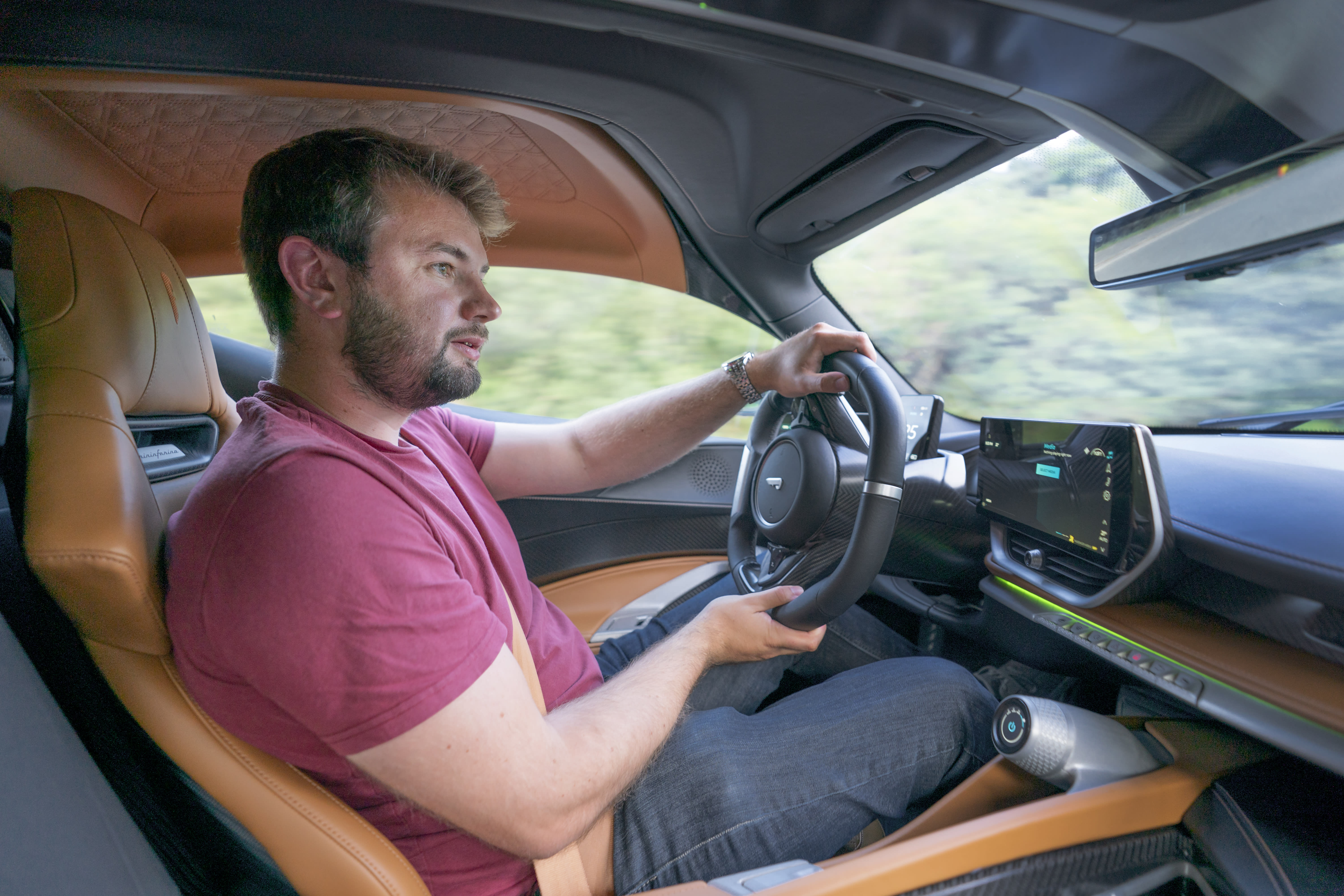.jpg)
Mini Clubman Review
.jpg)
Introduction
Although some people – usually grumps who long for the return of something called “the good old days” – often lambast the current Mini Hatch for being considerably larger than the original, it isn’t an especially roomy car. The five-door version is a bit more practical, but it’s still cramped for those in the back and the boot is still a bit small.
So if you want the style, quality and handling of a Mini, but the interior space of a conventional family hatchback, what do you do?
Well, you lease this: the Mini Clubman. Effectively an estate version of the Mini Hatch, it offers a bigger boot and more rear passenger space, but it doesn’t sacrifice the hatchback’s handling or its premium interior.
It also comes with some of the Mini’s retro styling, albeit tweaked to suit the much longer body. But can such changes make it a true rival to the established crop of (very competent) family hatches?
Select's rating score* - 3.8 / 5
At a Glance
From the front, the Clubman looks much like any other Mini, with the round headlights, downturned grille, and the round door mirrors. Even the side profile includes some classic Mini touches, including the upright windscreen and the flashes on the wings in front of the front doors.
But at the back, it looks somewhat different, with double rear doors and a quite squared-off estate body. It wears the extra bulk well, but it isn’t as pretty as a three- or five-door Mini.
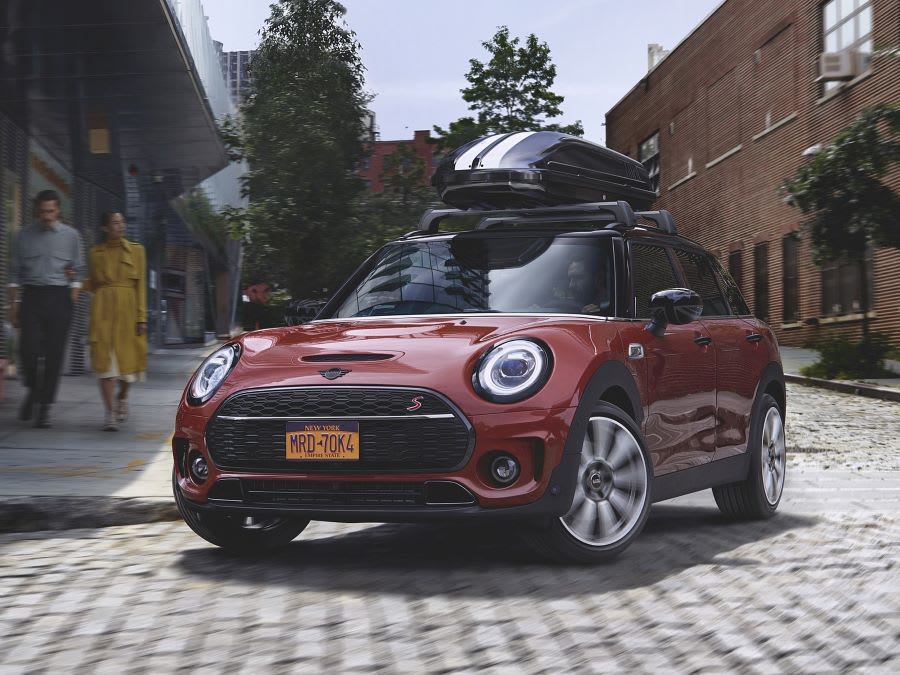
The interior, however, is almost identical to that of the Mini Hatch, although there is a little more space in the back. That means you get lots of premium materials and impeccable build quality, not to mention lots of funky retro touches that remind you of Mini’s heritage.
And though the infotainment system doesn’t work as well as it does in the BMWs it came from, it’s still pretty good.
But this car doesn’t just appeal for its space or the way it looks, but because of its handling properties. Minis have always been good to drive, and the Clubman is no exception, offering agility and stability in equal measure. Few family hatchbacks drive as well as the Mini, despite its overgrown back end and the extra weight.
Key Features
It would be naïve to suggest image is not one of the key reasons for leasing a Mini Clubman, but there’s nothing wrong with that. The Clubman looks great from most angles, and even the boxy back end sits neatly with the more familiar front.
And it’s the same inside, where there are plenty of trademark Mini features and retro touches. There are toggle switches on the dashboard and a big circular touchscreen housing in the middle of the dash harks back to the original Minis.
Speaking of which, that infotainment system is another of the Clubman’s big draws. Mini is owned by BMW, and the German brand has bestowed it with a sort of watered-down version of the executive cars’ iDrive infotainment.
That means it’s one of the best systems of its kind, with a rotary dial that allows you to keep your eyes on the road while using it. Assuming you’ve learned your way around the menus, that is.
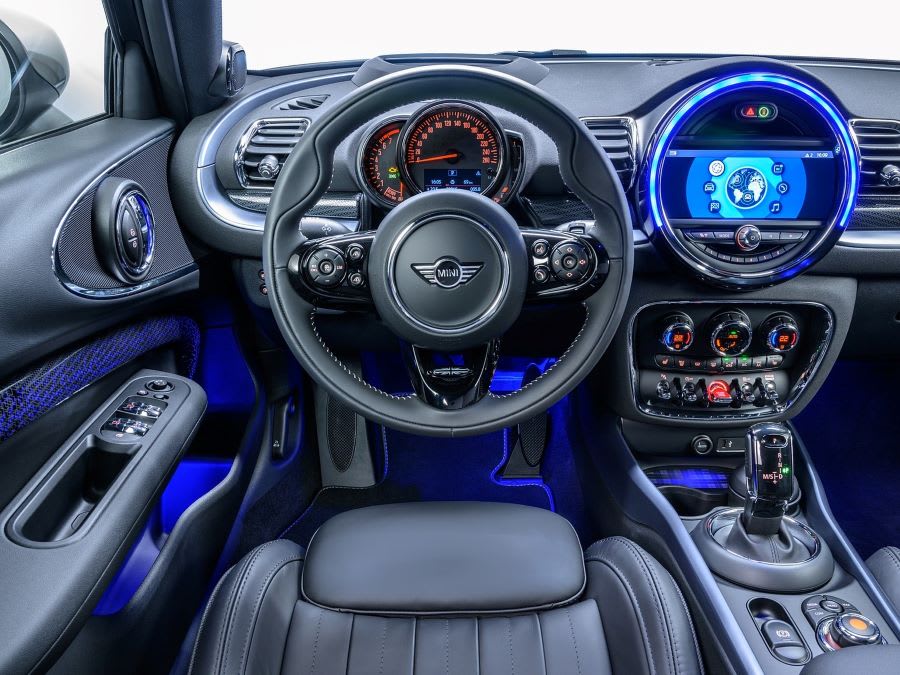
Performance & Drive
The Clubman engine range is more simplistic than it once was, now Mini has done away with diesel power and most of the all-wheel-drive models. That basically leaves us with a choice of three different petrol engines, all but one of which drives the front wheels alone.
For those who just want an efficient runabout, there’s the Cooper 1.5-litre petrol engine that comes with 136hp and a six-speed manual gearbox as standard, while an automatic gearbox is available as an option. No matter which transmission you pick, it sprints from 0-62mph in 9.2 seconds and hits a top speed of 128mph.
Alternatively, you can go for the 2.0-litre Cooper S, which is also available with a choice of gearboxes. That engine produces 178hp and manages the 0-62mph sprint in 7.3 seconds, although that falls to 7.2 in cars with the automatic gearbox. Both transmissions allow a top speed of 142mph.
Finally, the John Cooper Works is another 2.0-litre petrol engine, but it offers a weighty 306hp and represents the only all-wheel-drive option. Offered solely with an automatic gearbox, it’s quick enough to sprint from 0-62mph in 4.9 seconds before racing on to 155mph. That makes it considerably faster than a Volkswagen Golf GTI.
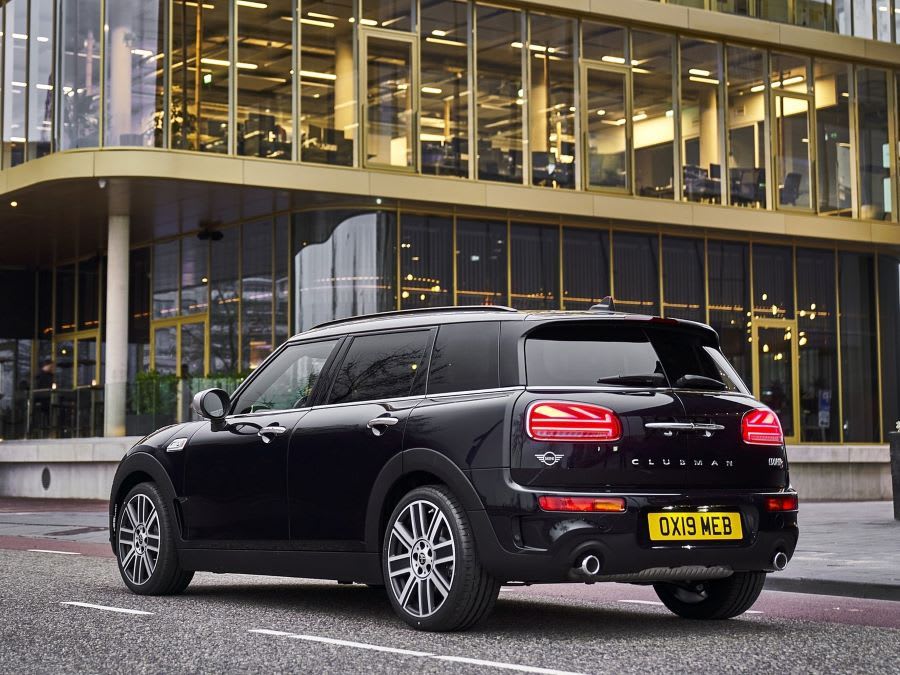
No matter which engine you choose, the Clubman drives brilliantly. It’s a little heavier than the supremely agile Mini Hatch, of course, but it still turns into corners eagerly and feels light on its feet. The steering is a bit short on feel, but overall it’s up there with the best-handling hatchbacks on the market, and compared with conventional models from the likes of Hyundai and Kia, it’s streets ahead.
The trade-off is a slight firmness to the ride, particularly for models with sport suspension. If comfort is important to you – especially around town or on back roads – then steer clear of the John Cooper Works or the Sport models. More conventional models feel a little stiff, but the body is well controlled and there’s no wallowiness, but this is a car that’s very much set up for handling.
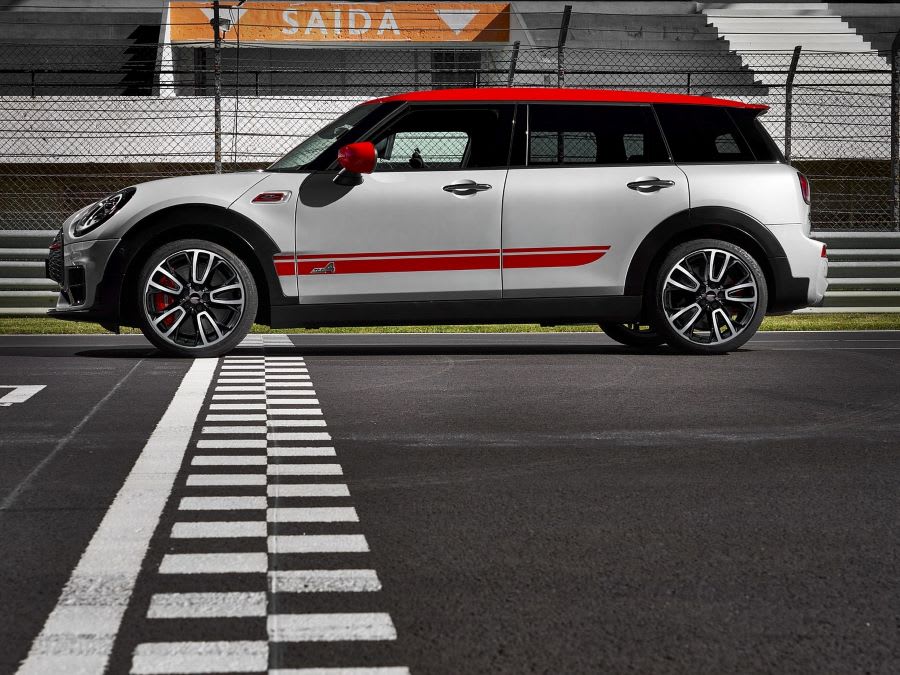
Running Costs & Emissions
Now the Clubman range has gone petrol-only, there aren’t many economical choices for the cost-conscious motorist. The most fuel-efficient model is now the 1.5-litre Cooper, which will return between 43.1 and 47.9mpg, depending on which gearbox and trim level you pick. In fairness, the Cooper S is only slightly thirstier and offers vastly improved performance.
For company car drivers, CO2 emissions are king, and the Clubman is unlikely to win many customers over. With no hybrid option and no diesels, the Cooper is the most eco-friendly model, and even that emits between 136 and 147g/km. At best, the Clubman will slot into the 31% company car tax bracket, but when the likes of the Seat Leon and Toyota Corolla offer less polluting hybrid or plug-in hybrid powertrains, the Clubman won’t be on many company car drivers’ shopping lists.

Interior & Technology
Among the Clubman’s myriad strengths is the cabin, which is a very stylish, very well-built environment. The design is inspired by the original Mini, which had a large, round speedometer in the middle of the dashboard, and the circular designs on the front of the current models. The rounded styling is identical to that of the Mini Hatch, and it’s just as well constructed.
The materials are generally excellent, apart from the odd bit of slightly shiny plastic, and it’s all bolted together with typically German precision. All the switchgear feels robust, and the handles and touchpoints are all solid and substantial. It feels like a properly premium product – particularly if you opt for a more luxurious car with leather upholstery.
And it’s high-tech, too. As standard, the instruments are analogue, which fits with the Clubman’s retro theme, but the sizeable infotainment system remains in the centre of the dashboard. Slotting into a circular housing ringed by LEDs, the system is essentially a modified version of the iDrive system used to such effect by Mini’s parent company, BMW.
Over the years, BMW has perfected the system to make it one of the very best on the market. With a touch-sensitive screen and a rotary controller down on the centre console, drivers can choose how they use the system, and those who have learned their way around can use it more or less without taking their eyes off the road.
The system can work alongside other high-tech features, including the optional digital instrument display, the head-up display and Mini’s connected car technology, allowing the car to be paired with a smartphone app. Unfortunately, however, the Android Auto smartphone integration technology is not available, but the Apple CarPlay system is available as standard.
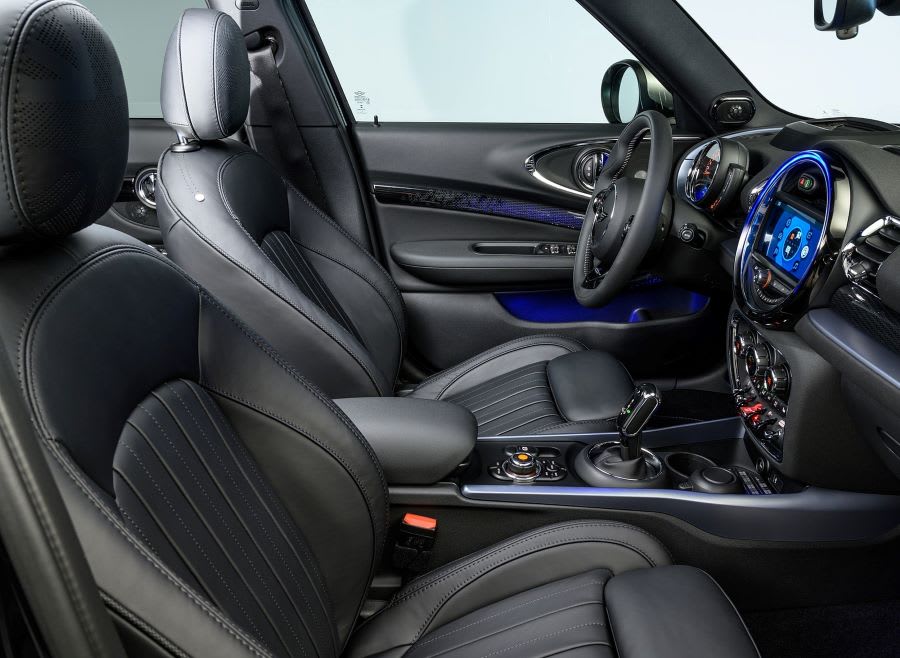
Practicality & Boot Space
The whole point of the Clubman is practicality, so would-be customers will be pleased to see a larger boot than the five-door hatchback. Loaded to the window line, the space measures 360 litres – an increase of more than 80 litres on the five-door Mini – but still marginally smaller than the boot in a VW Golf or Mercedes-Benz A-Class. Fold the back seats down and load it to the roof, however, and the Clubman’s 1,250-litre cargo space is more impressive.
For passengers, the situation is equally positive, with more than adequate head- and legroom for two adults to occupy the rear bench. Sitting a third back there might make things cramped, but it’s a considerable improvement on the standard three- and five-door Minis.
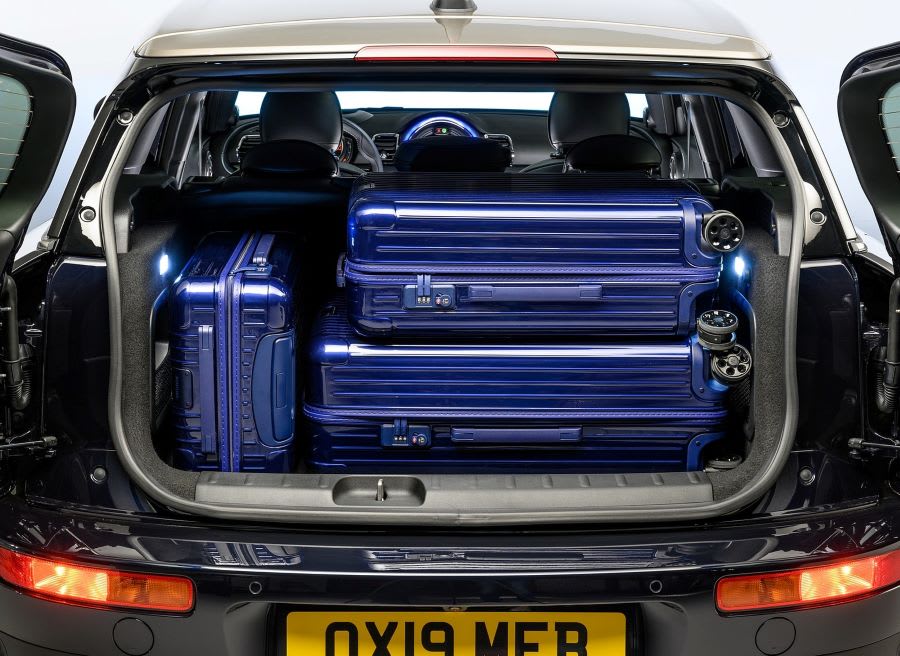
Safety
The Clubman scored highly in the Euro NCAP crash test, managing four stars out of a possible five. The 90% score for adult occupant protection was mightily impressive, but it was let down by mediocre results in other areas, including child occupant protection.
However, that was due to a passenger airbag switch that was not standard on the vehicle tested, and shouldn’t necessarily detract from what is generally a very safe vehicle.
In a bid to ensure it’s as secure as possible, every version of the Clubman includes autonomous emergency braking, which can stop the car automatically to prevent or mitigate an accident.
All models also come with Isofix child seat fixings in the back and an automatic emergency rescue call system, which in the event of an accident sends emergency services data on the vehicle’s location and the severity of the impact.
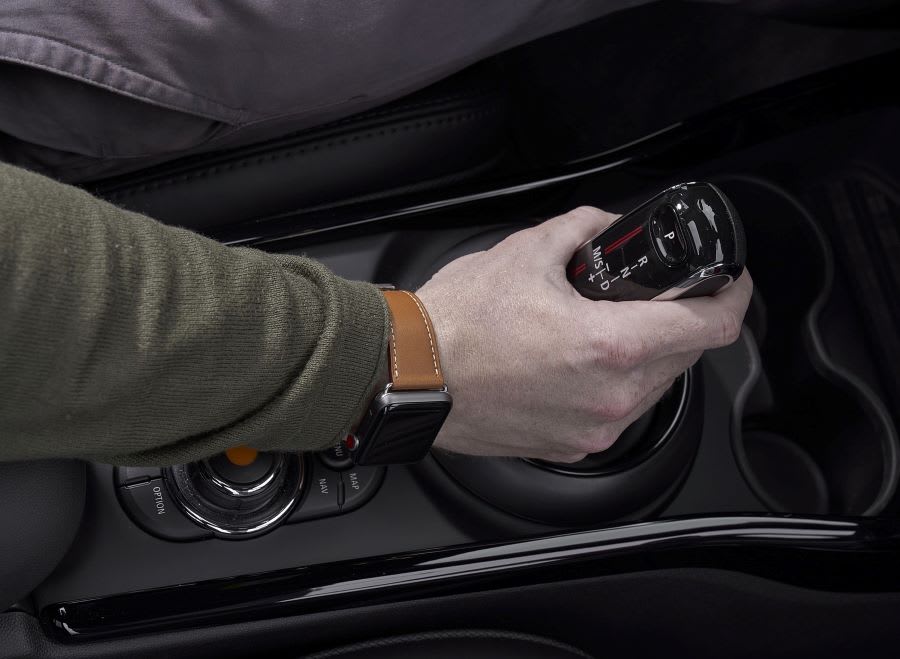
Options
The Mini Clubman range is a little complicated, because there are two different decisions to make. First of all, it’s a question of choosing an engine, with two different core options to pick from. Basically, it’s a straight choice between the Cooper and Cooper S, but then each engine is available with a choice of four different trim levels. Above that, the John Cooper Works has its own bespoke, performance-orientated kit list.
Each of those three engines come with their own set of features, with the Cooper S providing some sporty styling features including a front air scoop, and the John Cooper Works offering an aerodynamic body kit.
For those who choose the Cooper or the Cooper S, there’s a choice of four different trim levels: Classic, Sport, Exclusive and Shadow Edition. The Classic model is the basic option, offering alloy wheels, manual air conditioning and an 8.8-inch touchscreen infotainment system with satellite navigation and the Apple CarPlay smartphone integration tech.
Moving up to the Sport model gets you larger alloy wheels, some John Cooper Works interior features and sport suspension, as well as some extra styling features. A black roof comes as standard, for example, while there are also black door mirror caps and a John Cooper Works aerodynamic kit. The Exclusive version, meanwhile, also comes with 18-inch alloy wheels, plus a silver roof and silver mirror caps as standard, as well as leather upholstery and black roof lining.
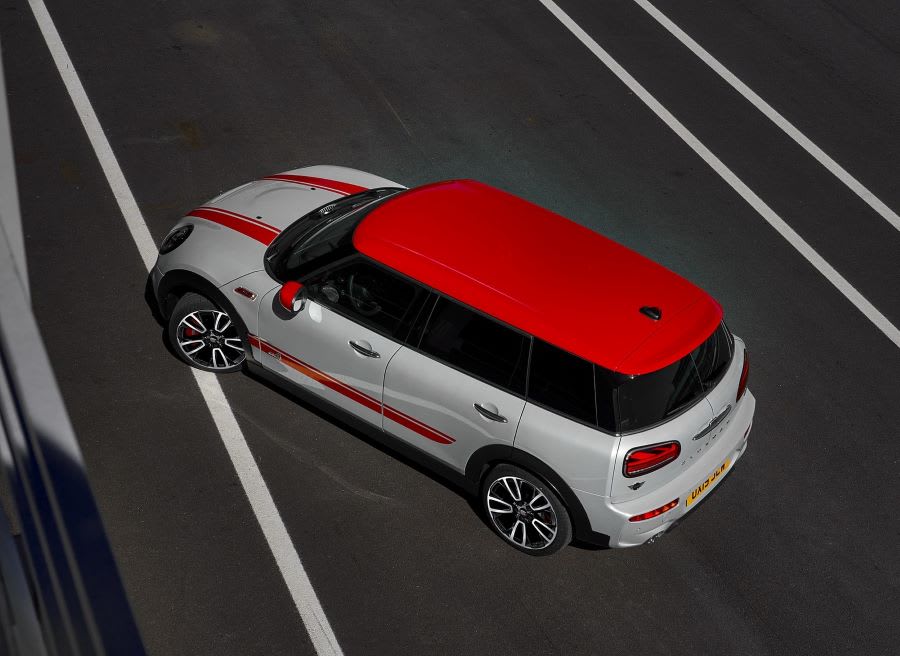
Shadow Edition cars are based on the Sport trim, but they come with larger 19-inch alloy wheels, black bodywork and a silver roof. There’s also a host of Shadow Edition graphics on the bonnet, roof and the dashboard.
Finally, the John Cooper Works model tops the range, providing the full John Cooper Works aerodynamic body kit, part-leather upholstery and some black interior trim. The John Cooper Works also comes with the Comfort Plus Pack as standard, providing automatic climate control, seat heating and a rear-view camera, among other features.
And that brings us neatly on to the options packs. Mini offers a range of option packs that combine a number of features, giving customers some features that probably ought to be provided as standard – particularly on the Sport and Exclusive models.
We’d recommend the Comfort Pack, which provides heated seats and climate control, and those who want a rear-view camera can upgrade to the Comfort Plus Pack. Tech fans will also want the Navigation Plus Pack, which gives you a digital instrument display and a head-up display, as well as the connected car tech.

Rival Cars
It’s quite difficult to pigeon-hole the Clubman. Technically speaking, it should probably be a supermini estate, which would put it up against the Skoda Fabia estate and, um, that’s it… Instead, it’s probably more realistic to think of it as a stylish and practical family hatchback, which means its key rivals are the Volkswagen Golf, Ford Focus and Toyota Corolla.
Other alternatives include the Kia Ceed (and, by extension, the very svelte Proceed), the Hyundai i30 and the glorious new Peugeot 308. Also consider the new-look Vauxhall Astra, the Renault Megane and the Seat Leon.
But none of those cars feels as upmarket as the Mini, and only the 308, Megane and Proceed are anything like as stylish. For a bit more luxury, perhaps the Audi A3, Mercedes-Benz A-Class and BMW 1 Series are more fitting bedfellows.
But then only the 1 Series can match the Mini’s handling, so perhaps the closest rival is, in fact, the Mazda3. Sexily styled, great to drive and with a very classy interior, the Mazda is one of the best cars in its class. But it still isn’t as cute as the Clubman.
Verdict & Next Steps
The Clubman is not the Mini that sets hearts racing, but it might well be the Mini that suits drivers’ needs. And that’s probably even more important. For those who love the Mini look and the Mini brand, the Clubman is the ideal family car, offering some much-needed extra space without sacrificing style or quality. The fact it’s still great to drive is simply a socking great cherry on top of an already sweet cake.
Where to next?
View latest Mini Clubman leasing deals - from just £293.49 per month inc VAT**
Looking for a great leasing deal? Check out our incredible range of car lease deals
New Estate? Read our latest Car Reviews and find the right model for you
Want to know more about leasing? Take a look at our comprehensive Leasing Guides
Interested in everything motoring? Why not catch up on all the latest Car Leasing News.
**Score based on Select’s unique meta score analysis, taking into account the UK’s top five leading independent car website reviews of the Mini Clubman
**Correct as of 05/01/2022. Based on 9 months initial payment, 5,000 miles over a 48 month lease. Initial payment equivalent to 9 monthly payments or £2641.41 Ts and Cs apply. Credit is subject to status.
